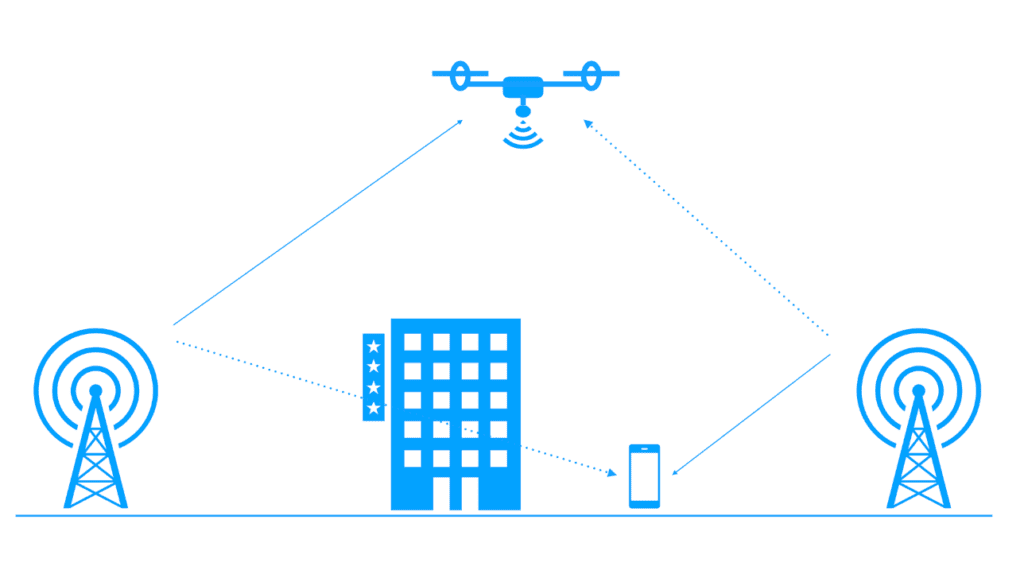In this blog, we have Dr. Xingqin Lin, the winner of the 2020 IEEE ComSoc Best YP in Industry award for the contribution to IoT, Aerial, and D2D communications in 5G NR and LTE Advanced, sharing an insightful story about his research experiences.

Xingqin is a Master Researcher, Team Leader, and Standardization Delegate at Ericsson Research Silicon Valley, leading 5G/6G research and standardization in the areas of non-terrestrial networks (satellites/high altitude platform systems/airplanes/drones). He is a member of Ericsson NextGen Advisory Board, collaborating with Ericsson Executive Team to drive strategic projects. He is a key contributor to 5G NR, NB-IoT, and LTE standards. He served as an editor of the IEEE COMMUNICATIONS LETTERS from 2015-2018. He is an IEEE Senior Member. He holds a Ph.D. in electrical and computer engineering from The University of Texas at Austin, USA.
Xingqin’s pioneering work on mobile network-connected unmanned aerial vehicles (UAVs, aka. drones) helped establish the 3GPP Release-15 work on enhanced LTE support for aerial vehicles. He is co-author of the book “Wireless Communications and Networking for Unmanned Aerial Vehicles.” He is serving as the Industry Liaison Officer for the IEEE ComSoc Emerging Technology Initiative on Aerial Communications.
So, you bet, the story we will hear from Xingqin is about drones!
Mobile-enabled drones
Commercial drone applications are becoming increasingly common and present attractive commercial and strategic opportunities for a wide range of industrial players. However, we can genuinely unleash drone technology’s potential when both technological capabilities and regulations allow for autonomous operation beyond visual line of sight. So, we require wide-area secure wireless network connectivity to safely expand drone operations and unlock the potential of drone technology for commercial applications. Also, mobile networks are well suited to provide the needed connectivity.
To date, mobile networks have been primarily optimized for users on the ground and inside buildings. This scenario is what we do not expect to change radically anytime soon since the bulk of the traffic will be on the ground, even in the future. Given this trend, it is essential to fully understand what is required by the network to support major drone use cases.
The figure below provides an illustration of wide-area wireless connectivity for drones with terrestrial mobile networks.

Sky is not the limit: A journey began with a 3GPP study item
In 2016, we decided that one key area in the 3GPP Release 15 was to enable mobile-network-connected drones. To this end, we submitted a new study item (SI) proposal (RP-162038) on Enhanced LTE Support for Aerial Vehicles to the 3GPP RAN plenary meeting #74 in December 2016. The proposal attracted much interest, leading to the new SI’s approval (RP-170779) on Enhanced LTE Support for Aerial Vehicles at the 3GPP RAN plenary meeting #75 in March 2017. 35 members in 3GPP supported the SI, and Ericsson and NTT DOCOMO together served as the SI rapporteurs.
The 3GPP study assessed LTE networks’ performance that supports aerial vehicles with up to the 3GPP Release-14 functionality. The study completed in December 2017, and the 3GPP technical report TR 36.777 documented the outcomes, including comprehensive analysis, evaluation, and field measurement results. Since then, the 3GPP TR 36.777 has become a definitive guide for mobile-network-connected drones and widely cited by academia, industry, and regulatory organizations.
The 3GPP study concluded that it is feasible to use existing LTE networks to provide connectivity to drones, but there may be challenges related to interference and mobility. The challenges become more visible when the density of drones was high. The 3GPP study identified both implementation and specification enhancement solutions to address these issues.
Sky is not the limit: A journey continued with a 3GPP work item
After completing the SI, a follow-up work item (WI) was approved at the 3GPP RAN plenary meeting #78 in December 2017. Ericsson served as the rapporteur of the WI (RP-172826). The WI objective was to specify features that can improve the efficiency and robustness of the terrestrial LTE network for delivering connectivity solutions more efficiently for drones. This 3GPP WI was completed in June 2018.
The set of enhancements introduced in the WI on Enhanced LTE Support for Aerial Vehicles are summarized as follows:
- Subscription-based aerial UE identification and authorization
- Height and location reporting based on the event that the UE’s altitude has crossed a network-configured threshold altitude
- Interference detection based on a measurement reporting that is triggered when a configured number of cells fulfills the triggering criteria
- Open-loop power control enhancements including UE specific pathloss compensation factor and extended range of nominal target received power
- Signaling of flight path information from the UE to the network
The figure below illustrates the timeline of the 3GPP Release-15 work on Enhanced LTE Support for Aerial Vehicles.

Sky is not the limit: A journey moves forward beyond 3GPP
After completing the 3GPP Release-15 work on connected drones, we have seen a surge of field trials for connected drones around the globe by major operators and vendors. Meanwhile, various industry organizations such as GSMA and CTIA have set up special drone interest groups to develop new use cases and create an open and trusted regulatory environment. The world has also witnessed governments’ growing efforts to integrate civil safety and public drone operations into airspace systems. One exemplary step is the Unmanned Aircraft System (UAS) Integration Pilot Program (IPP) in the US. The IPP was recently concluded in October 2020, after which the Federal Aviation Administration (FAA) launched a new program called BEYOND to continue work on the remaining challenges of UAS integration.
We have also seen much-increased momentum in academic research in this area, which has led to the creating of the IEEE ComSoc Emerging Technologies Initiative on Aerial Communications. It has been my pleasure to serve as the Industry Liaison Officer for this new exciting initiative on Aerial Communications to strengthen the bridge between ComSoc and the industry community.
Takeaways
Wide-area network coverage is needed to expand drone operations for beyond visual line-of-sight missions safely. Mobile networks provide wide-area secure wireless connectivity, utilizing proven technology based on mobile licensed spectrum and global standards. Already today, LTE networks are capable of supporting the initial deployment of low-altitude drones. The significantly improved 5G networks’ capabilities will provide more efficient and effective mobile connectivity for large-scale drone deployments with more diverse applications.
On a more personal level, I would like to share that it takes perseverance, collaboration, and compromise to drive impact in 3GPP, whose process is open, innovative, and complex. Decisions in 3GPP are in principle made by consensus, resulting in widely accepted international standards for mobile telecommunications. I would also encourage Young Professionals to dream big and dare to lead. Though 2016 was just my second year at Ericsson, I took the responsibility to drive the related works on mobile-network-connected drones. So, dream big and dare to lead: Your work can help shape a world of communication!
Want to learn more?
Read our IEEE Communications Magazine article: The Sky Is Not the Limit: LTE for Unmanned Aerial Vehicles, which formed the basis of the 3GPP Release-15 work on enhanced LTE support for aerial vehicles, including the 3GPP TR 36.777.
Read Ericsson white paper, Drones and Networks: Ensuring Safe and Secure Operations, to learn more about drones and networks.
More results on field trials, simulations, and design insights can be found in our IEEE Vehicular Technology Magazine article: Mobile Network-Connected Drones: Field Trials, Simulations, and Design Insights. Last but not the least, if you’re interested in a complete in-depth treatment of UAV wireless communications and networking, check out this book published by Cambridge University Press: Wireless Communications and Networking for Unmanned Aerial Vehicles.
**Statements and opinions given in this blog are the expressions of the contributor(s). Responsibility for the content of published articles rests upon the contributor(s), not on the IEEE Communication Society or the IEEE Communications Society Young Professionals.
Author
Xingqin Lin, Master Researcher, Ericsson Inc.
Email: xingqin[dot]lin[at]ericsson[dot]com

